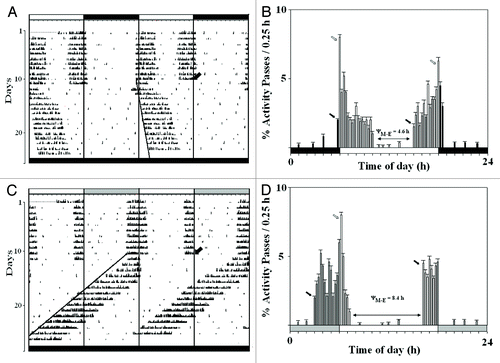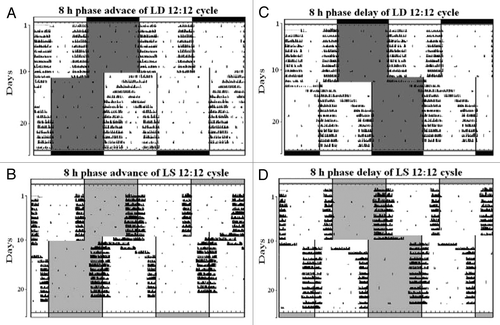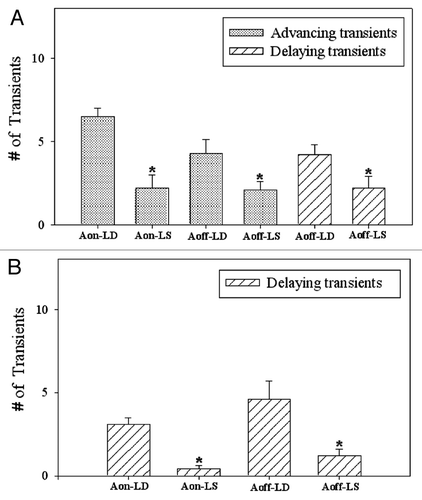Figures & data
Figure 1. Entrainment and free-run in D. biarmipes. The actograms of the representative control and experimental males of D. biarmipes which were entrained by LD 12:12 (A) and LS 12:12 (C) cycles, respectively, and then transferred to DD on the day 11 (oblique arrow). The mean activity profiles of 49 control (B) and experimental (D) males during the entrainment are showing the circadian peaks (dark arrows), the masking peaks (open arrows) and the phase relationship between the Aoff of the M peak and Aon of the E peak (ΨM-E). The dark and open time bars denote the photophase (300 lx) and scotophase (0 lx), respectively, the long dark time bars denote DD and the hatched portion of the time-bars denotes the dim nocturnal irradiance at 0.03 lx.

Table 1. Effects of the lighting schedules with dark nights (Control Expt.) and dimly-lit nights (LAN Expt.) on the features of entrainment and free-running rhythmicity of D. biarmipes.
Figure 2. Simulated advance and delay jetlags in D. biarmipes. The actograms of the four representative males of D. biarmipes which were subjected to 8 h phase advance and delay of LD 12:12 cycles (A and C, respectively) and LS 12:12 cycles (B and D, respectively).

Figure 3. Transients after advance and delay jetlags. Advancing and delaying transients (mean ± S.D., n = 49 flies) endured by the activity onsets (Aon-LD) and offsets (Aoff-LD) of the control males and that of the experimental males (Aon-LS and Aoff-LS) of D. biarmipes following the advance (A) and delay shift (B) in the lighting schedules. The asterisks denote the statistically significant effects of the dim nocturnal illumination (p < 0.001).
